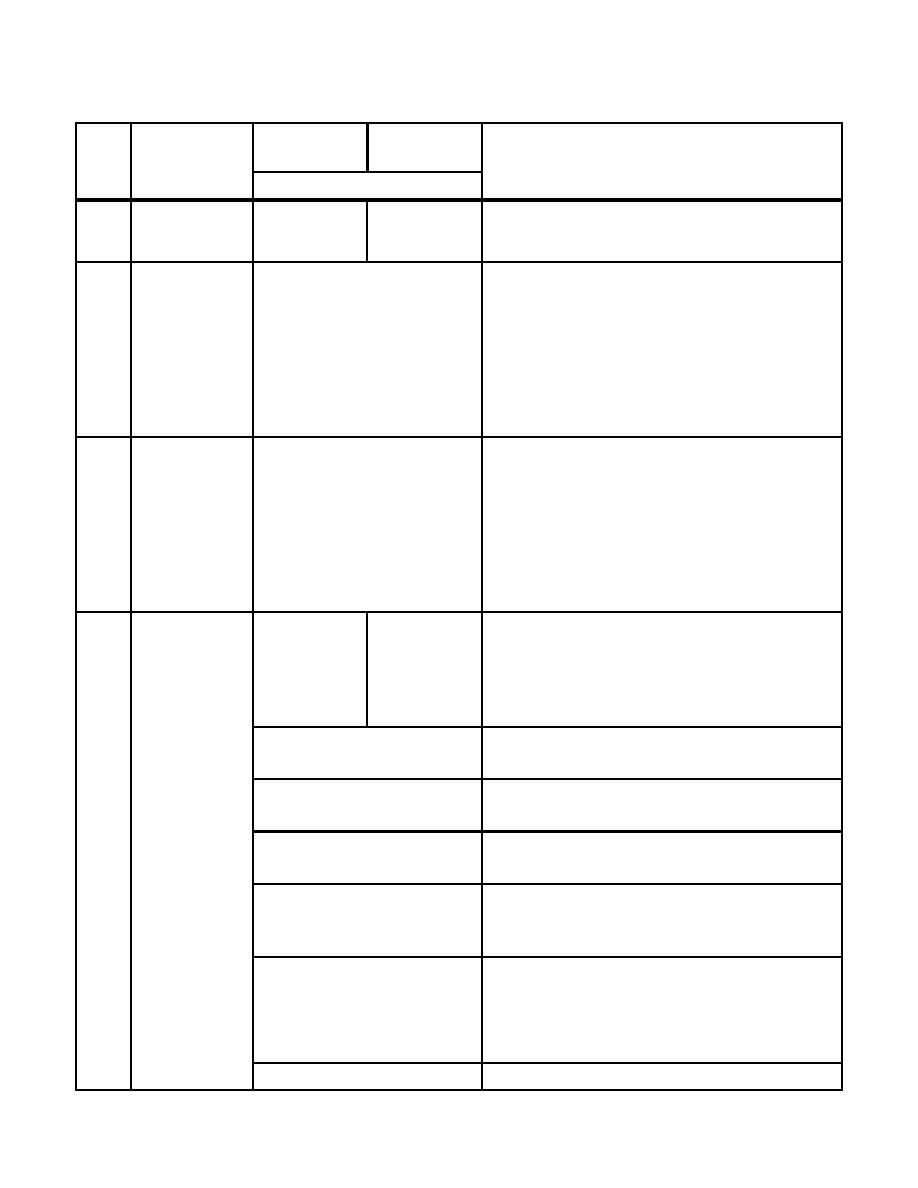
Chapter 3
Table 3.2. Runways.
Class A
Class B
Runway
Runway
Item
Item
No.
Description
Requirement
Remarks
152.4 m
228.6 m
Navy airfields constructed prior to 1981.
(500 ft)
(750 ft)
Max 10.0%
Exclusive of pavement, shoulders, and cover
13
Longitudinal
over drainage structures.
grades within
runway lateral
Slopes are to be as gradual as practicable.
clearance zone
Avoid abrupt changes or sudden reversals.
Rough grade to the extent necessary to
minimize damage to aircraft.
Exclusive of pavement, shoulders, and cover
Minimum of 2.0% prior
14
Transverse
over drainage structures.
to channelization*
grades within
Max 10.0%
runway lateral
Slopes are to be as gradual as practicable.
clearance zone
Avoid abrupt changes or sudden reversals.
(in direction
Rough grade to the extent necessary to
of surface
minimize damage to aircraft.
drainage)
213.36 m
304.80 m
Visual flight rules (VFR) without intervening
15
Distance
[700 ft]
[1,000 ft]
parallel taxiway between the parallel runways.
between
One of the parallel runways must be a VFR
centerlines of
only runway.
parallel
runways
632.46 m
VFR with intervening parallel taxiway.
[2,075 ft]
762.00 m
IFR using simultaneous operation (Depart-
[2,500 ft]
Depart) (Depart-Arrival).
1,310.64 m
Instrument flight rules (IFR) using
[4,300 ft]
simultaneous approaches.
For separation distance between fixed wing
runways and rotary wing facilities, see Table
4.1.
16
Width of
152.4 m (500 ft)
Centered on the runway centerline. All items
USAF
sited within this area must be frangible (see
Mandatory
Attachment 14).
Zone of
Frangibility
17
Length of
Runway length plus
Centered on the runway. All items sited within
3-7



 Previous Page
Previous Page
